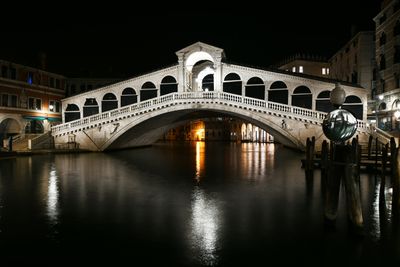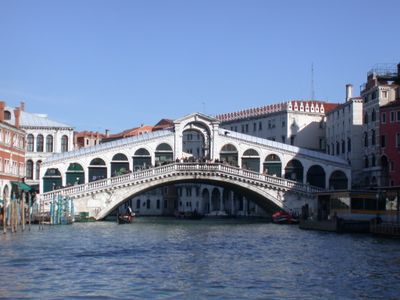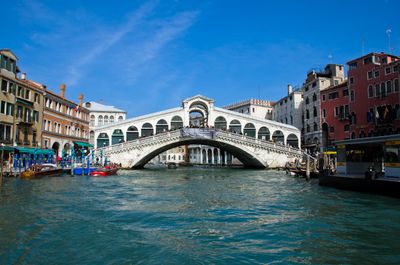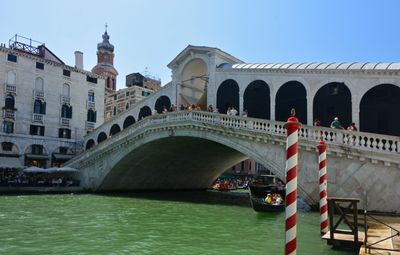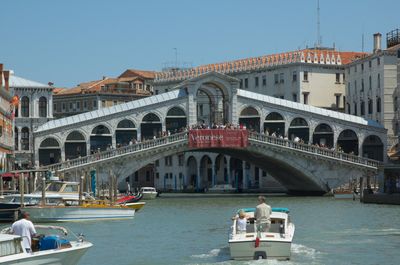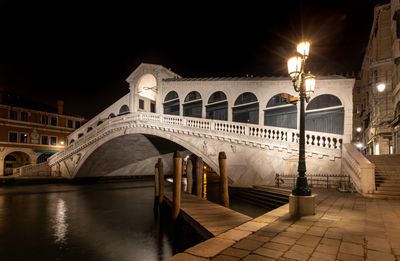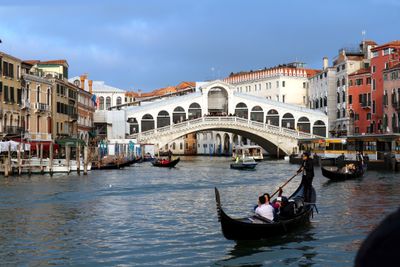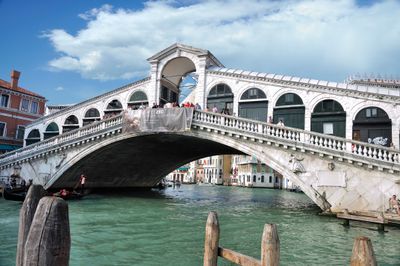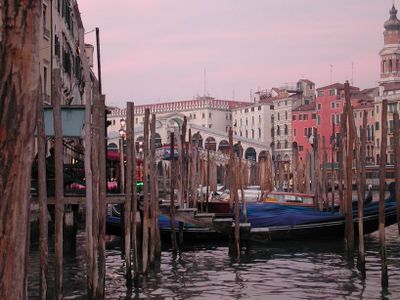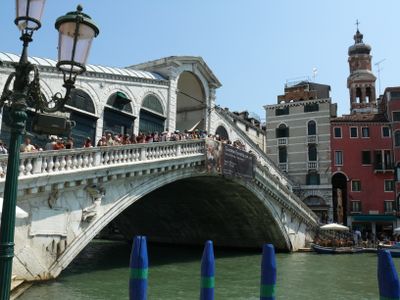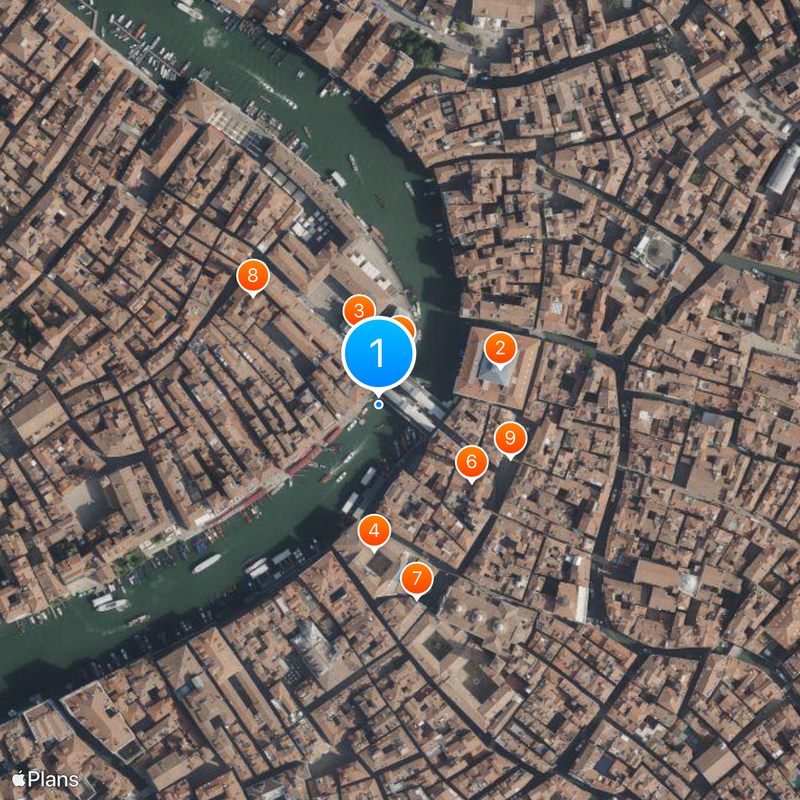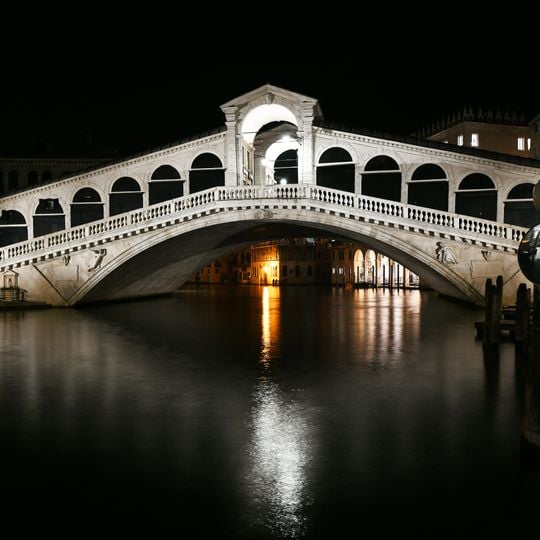
Rialto Bridge, Stone arch footbridge in San Marco, Venice, Italy
Rialto Bridge crosses the Grand Canal with a single stone arch measuring 48 meters in length, linking San Marco to San Polo. The covered ramps rise on both sides and meet beneath a central passageway flanked by shop arcades.
The current stone bridge began construction in 1588 following designs by Antonio da Ponte, replacing earlier wooden structures. Completion came in 1591, ending decades of debate over materials and design for the crossing.
The name Rialto comes from „Rivo Alto
Crossing happens on foot via stone steps that rise from both sides of the canal and converge at the center. Early morning or late evening offers less crowding, while midday and afternoon tend to be busy.
The foundations rest on roughly 6000 wooden piles driven deep into the canal bed to distribute weight across the soft subsoil. This pile foundation was a technical achievement for the period and continues to secure stability today.
Location: Venice
Inception: 1588
Architects: Antonio da Ponte
Official opening: 1591
Height: 7.32 m
Length: 48 m
Longest Span: 31.8 m
Width: 22.1 m
Made from material: stone
GPS coordinates: 45.43801,12.33564
Latest update: December 12, 2025 17:41
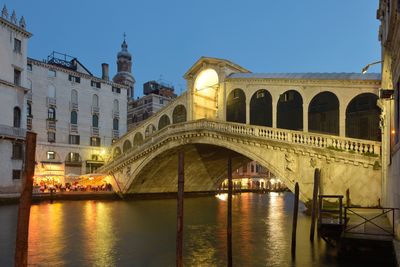

Bridges are a part of our daily lives. They have connected banks, valleys, and communities for centuries. This collection presents structures from various periods and regions. From medieval stone arches to modern steel constructions, these works demonstrate the evolution of engineering. The Rialto...

Stone arch bridges rank among the most durable structures in history. From Roman aqueducts in Spain to medieval river crossings in Central Europe, these constructions demonstrate the evolution of engineering over two millennia. The Pont du Gard in France once transported 20,000 cubic meters of water...
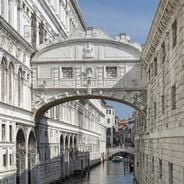
Venice offers many opportunities for photos. The city sits on over one hundred small islands connected by canals and bridges. The Grand Canal curves through the historic center, lined with palaces from different centuries. The Rialto Bridge spans the canal at its narrowest point and has served as a...

Venice is naturally suited for romantic getaways, with its winding canals, historic palaces, and squares full of history. This selection gathers places that make the city so popular among couples: Saint Mark's Square with its basilica and campanile, the Bridge of Sighs where tradition invites you to...
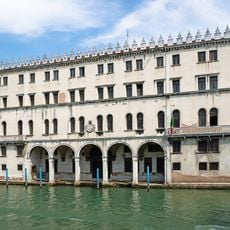
Fondaco dei Tedeschi
89 m
San Giacomo di Rialto
53 m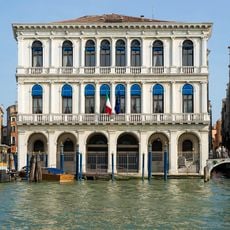
Palazzo Dolfin Manin
101 m
Palazzo dei Camerlenghi
40 m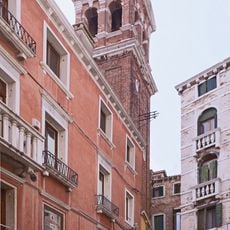
San Bartolomeo
84 m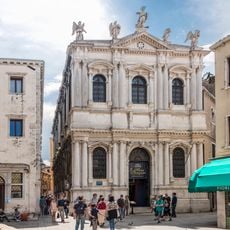
Scuola grande di San Teodoro
137 m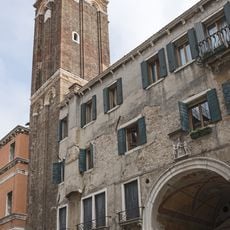
San Giovanni Elemosinario
116 m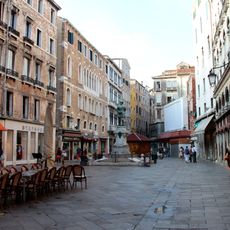
Campo San Bartolomeo
99 m
Palazzo Civran
106 m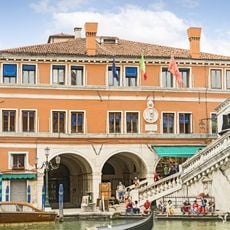
Palazzo dei Dieci Savi
39 m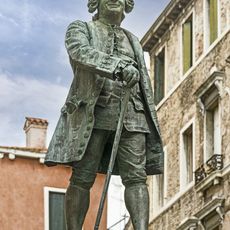
Monument to Carlo Goldoni
99 m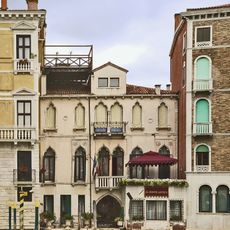
Casa Perducci
108 m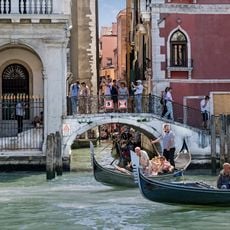
Ponte Manin
104 m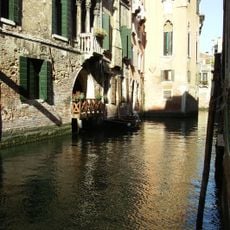
Palazzo Amadi
134 m
Rialto Bridge
24 m
Palazzo Bembo
125 m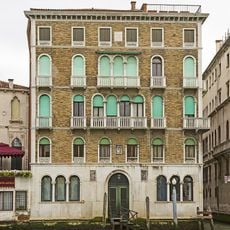
Palazzo Ruzzini
94 m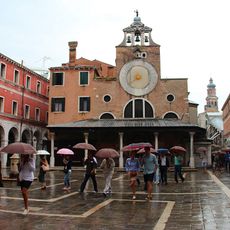
Campo San Giacomo di Rialto
73 m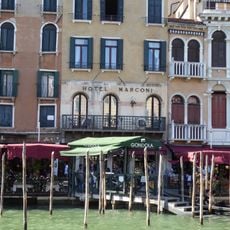
Palazzo Barbarigo
46 m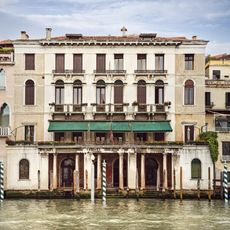
Palazzo Sernagiotto
143 m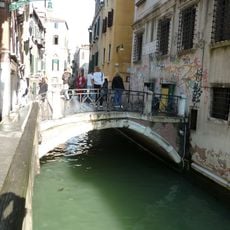
Ponte de l'Olio
121 m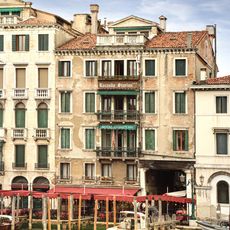
Casa Sollotti
105 m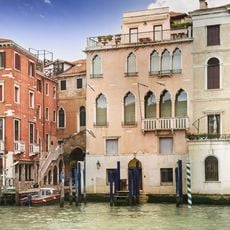
Palazzo Remer
156 m
Fondaco dei Tedeschi (Roof top terrace)
70 m
Fabbriche Vecchie
90 m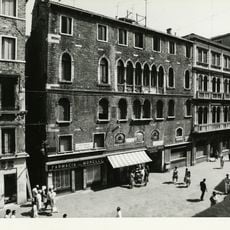
Palazzo Moro a San Salvador
114 m
Scenic viewpoint
18 m
Scenic viewpoint
34 mVisited this place? Tap the stars to rate it and share your experience / photos with the community! Try now! You can cancel it anytime.
Discover hidden gems everywhere you go!
From secret cafés to breathtaking viewpoints, skip the crowded tourist spots and find places that match your style. Our app makes it easy with voice search, smart filtering, route optimization, and insider tips from travelers worldwide. Download now for the complete mobile experience.

A unique approach to discovering new places❞
— Le Figaro
All the places worth exploring❞
— France Info
A tailor-made excursion in just a few clicks❞
— 20 Minutes
